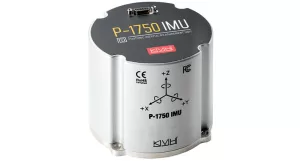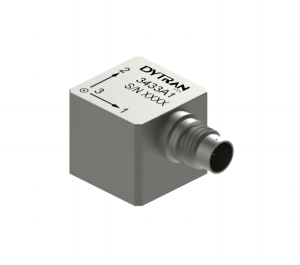
IMU vs Accelerometer: Understanding the Differences and Applications
December 28 2023  1745
1745
Inquiry
Global electronic component supplier AMPHEO PTY LTD: Rich inventory for one-stop shopping. Inquire easily, and receive fast, customized solutions and quotes.
QUICK RFQ
ADD TO RFQ LIST
In this blog, we will delve into the differences between IMUs and accelerometers, exploring their functionalities, applications, and significance in modern technology.
What IMU Stands For?

When Does IMU First Appear?
With the early development of inertial navigation systems for aircraft and maritime navigation, the idea of an IMU initially emerged in the early 20th century. But when microelectromechanical systems (MEMS) technology advanced in the late 20th century, modern miniature IMUs as we know them today started to take shape.What is IMU Used For?
IMUs find extensive use in robotics, virtual and augmented reality, inertial navigation, motion tracking, and robotics. Their precise orientation, velocity, and gravity force data allow for precise motion sensing and control in a variety of devices.Video related to IMU
What is an Accelerometer?

Types of Accelerometer
There are several different kinds of accelerometers, such as MEMS-based, piezoelectric, capacitive, and piezoresistive varieties. Based on characteristics including sensitivity, frequency response, and size, each type is appropriate for a particular application and measures acceleration using a different set of principles.What Does an Accelerometer Do?
Accelerometers are primarily used to detect and measure acceleration, giving important information about how objects move and vibrate. Numerous applications, such as inertial navigation, motion tracking, impact detection, and vibration analysis, make use of this information.How IMU Works?
An Inertial Measurement Unit (IMU) measures an object's orientation, velocity, and gravitational forces by integrating data from several sensors. Three different types of sensors are commonly found in IMUs: magnetometers, gyroscopes, and accelerometers.- Accelerometers: The acceleration felt about free fall is measured by these sensors as appropriate acceleration. Accelerometers provide information about the linear motion and direction of an item by detecting variations in velocity.
- Gyroscopes: Gyroscopes are devices that measure rotational velocity or angular rate along many axes. They are used to monitor changes in orientation and offer details about the angular motion of an item.
- Magnetometers: These devices gauge the magnetic field's strength and direction. The heading or orientation of the object concerning the Earth's magnetic field can be ascertained using this information.
How Does an Accelerometer Work?
An accelerometer generates an electrical signal in direct proportion to the acceleration it receives, operating on the principles of inertia. Although there are many other kinds of accelerometers, the Micro-Electro-Mechanical Systems (MEMS) kind is the most extensively utilized and can be found in a wide range of gadgets, including gaming controllers, cellphones, and airbag systems in cars. MEMS accelerometers usually comprise a tiny mass inside a shell, sustained by springs. Because of inertia, the mass inside the accelerometer prefers to remain at rest while it undergoes acceleration, which causes the shell to move in the opposite direction. Sensing components, such as piezoelectric materials or capacitive plates, provide an electrical signal proportional to the acceleration and are used to detect this movement. Put more simply, when the object accelerates, the mass inside the accelerometer moves. This movement is translated into an electrical signal that can be detected and utilized to calculate the acceleration the object is undergoing. After being analyzed, this electrical signal can be applied to several tasks, including impact detection, tilt sensing, vibration monitoring, and inertial navigation.Where is IMU Used?
- Aerospace and Defense: IMUs are utilized for guiding, stabilization, and navigation in aircraft, missiles, drones, and spacecraft.
- Robotics: IMUs are used in robotics to monitor motion, recognize gestures, and sense direction, which allows robots to move around and communicate with their surroundings.
- Consumer Electronics: To provide features like motion sensing, gesture control, and augmented reality, IMUs are integrated into gaming controllers, wearable technology, smartphones, and virtual reality systems.
- Automotive: IMUs are used to monitor and regulate the motion and orientation of vehicles in advanced driver-assistance systems (ADAS), inertial navigation systems, and vehicle stability control systems.
- Industrial Applications: IMUs are utilized in vibration analysis and structural health monitoring in addition to tracking and managing the motion of industrial machinery.
When Accelerometer is Used?
- Consumer Electronics: Screen orientation detection, gesture recognition, and gaming motion control are all made possible by the integration of accelerometers into smartphones, tablets, and gaming controllers.
- Automotive: Accelerometers sense abrupt changes in vehicle velocity and orientation and are utilized in rollover detection systems, electronic stability control systems, and airbag deployment systems.
- Aerospace and Defense: Accelerometers are used for guidance, navigation, and inertial measurement in airplanes, missiles, and spacecraft.
- Industrial Machinery: To identify problems, carry out predictive maintenance, and guarantee operational safety, accelerometers are used to measure vibration levels in industrial machinery.
- Healthcare: Accelerometers are incorporated into medical equipment to track activity, detect falls, and monitor patient movement.
IMU vs Accelerometer
Accelerometer:- Measures: Acceleration that is linear along its axes (such as tilt, movement, and bumps).
- Output: Gives details on the speed variation rather than the speed in absolute terms.
- Use cases: Fitness trackers, phone gestures, tilt detection, basic navigation.
- Limitations: Inability to distinguish between movement and acceleration brought on by gravity.
- Measures: Heading, angular velocity (rotation), linear acceleration, and occasionally the strength of the magnetic field (many sensors).
- Output: Offers details on changes in orientation and speed (such as pitch, roll, and yaw).
- Use cases: Advanced navigation, drones, robotics, virtual reality, stabilization systems.
- Advantages: Provides a more comprehensive view of motion and enables intricate computations like attitude estimate and dead reckoning.
- Disadvantages: Costlier and more intricate than accelerometers alone.
| Feature | Accelerometer | IMU |
| Measures | Linear acceleration (rate of change in velocity) | Linear acceleration, angular velocity (rotation), and sometimes magnetic field |
| Axes | 1, 2, or 3 axes | 3 axes + additional axes for gyroscope and magnetometer |
| Applications | Basic motion detection, tilting, pedometers, navigation | Advanced motion tracking, flight control, virtual reality, robotics |
| Complexity | Relatively simple | More complex due to multiple sensors |
| Cost | Generally less expensive | More expensive due to additional sensors |
IMU vs Gyroscope
While both IMUs and gyroscopes measure aspects of motion, they have distinct roles:- IMU: Combines accelerometer, gyroscope, and occasionally magnetometer data to provide a comprehensive picture of an object's motion, including orientation and direction.
- Gyroscope: A gyroscope is a device that measures rotation around an axis, although it cannot measure linear acceleration or ascertain the exact orientation of an item.
Conclusion
In conclusion, to fully utilize their potential for motion sensing and orientation tracking, it is imperative to comprehend the distinctions between accelerometers and IMUs. Accelerometers measure linear acceleration; IMUs, on the other hand, record both linear and angular motion by combining data from many sensors, offering a more complete answer. We can use accelerometers and IMUs to stimulate innovation and meet the changing needs of current technology by understanding their functions and applications.Populer Posts
10AX090S2F45E2SG
Intel
EP4SE530H40C2N
Intel
EP4CE10E22C8L
Intel
1SG085HN2F43E2LG
Intel
10AX090S3F45E2SG
Intel
A54SX72A-PQG208I
Microchip Technology
AGLN250V2-CSG81I
Microchip Technology
1SG250HU3F50E3XG
Intel
5SGXEA3K2F35I3LG
Intel
10CX105YF672I5G
Intel
